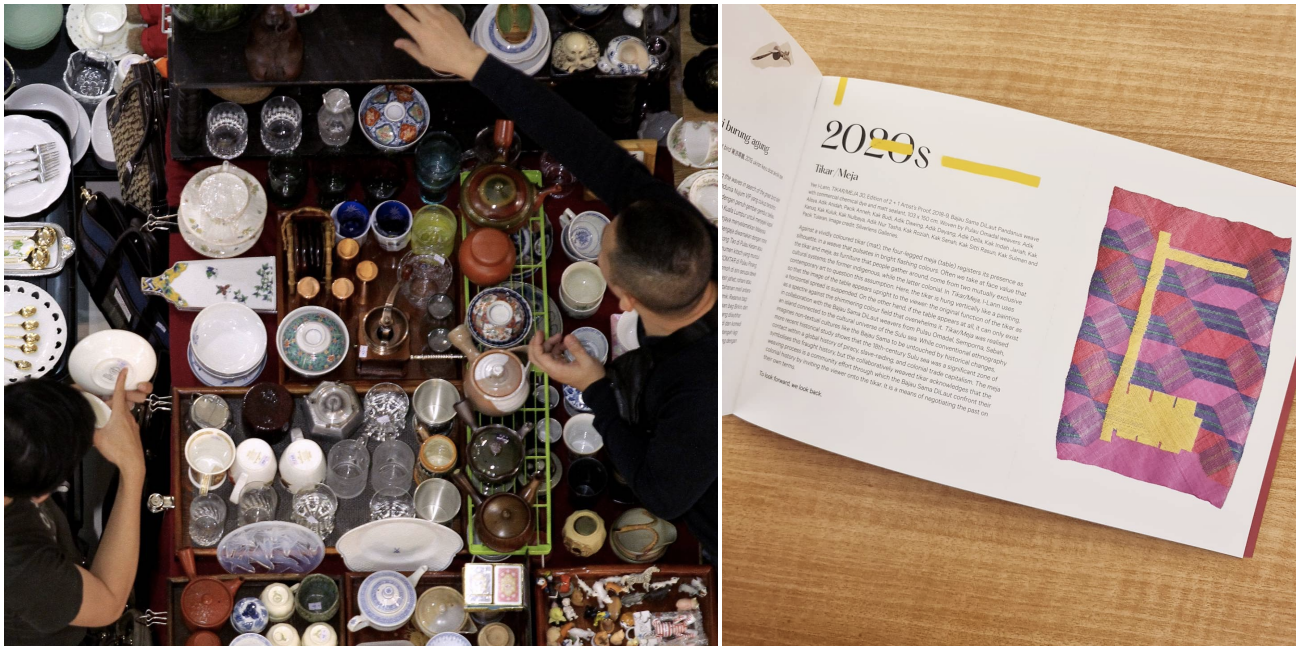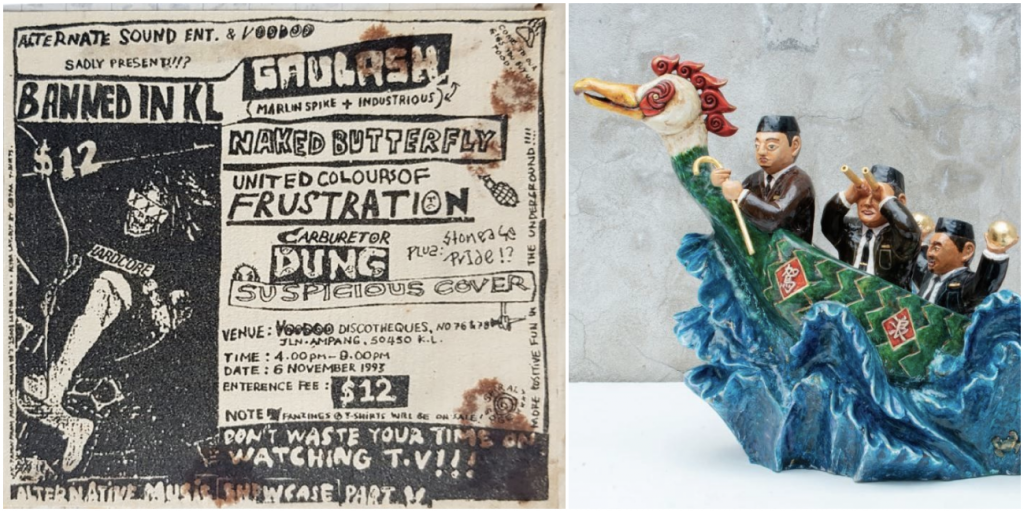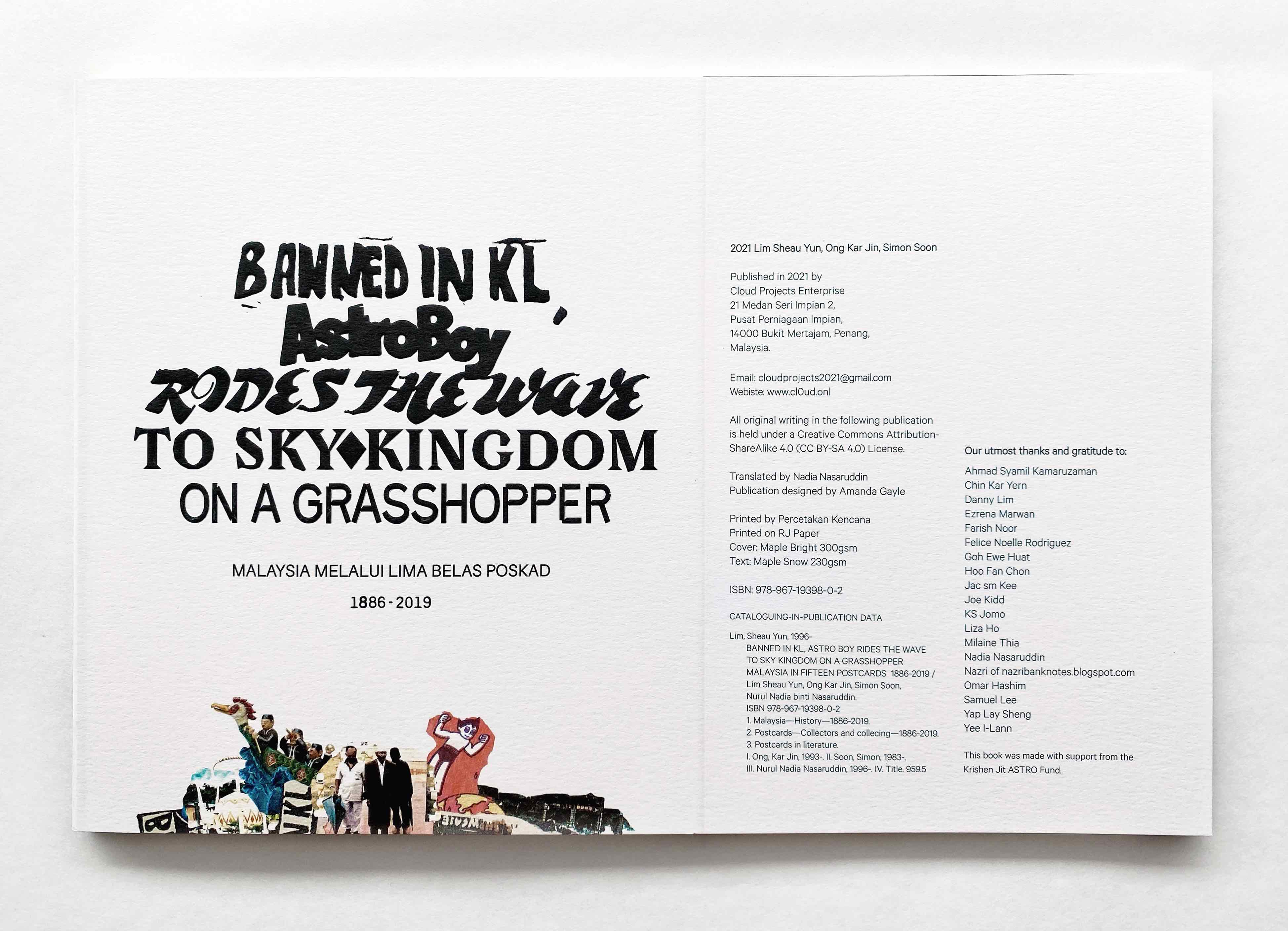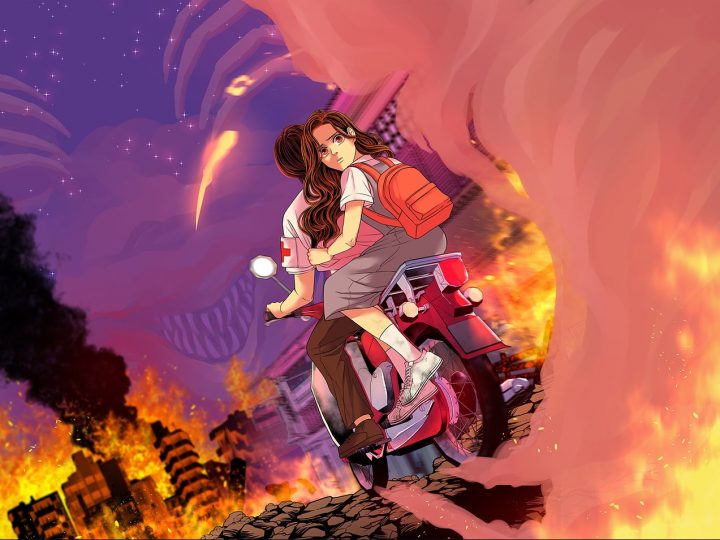PHOTOS: M’sian Book Recaps History with Postcards of ’90s Punk Gig Posters & ’80s Astroboy Ice-Cream
 Thirsty for JUICE content? Quench your cravings on our Instagram, TikTok and WhatsApp
Thirsty for JUICE content? Quench your cravings on our Instagram, TikTok and WhatsApp

Being stuck in a pandemic has hindered us from indulging in some of life’s simple pleasures that we now know we took for granted.
For instance, waking up in the morning and deciding to peruse a flea market for undiscovered gems is something most art fiends miss during this time. The sharp jab of euphoria after finding a vintage postcard worn brown by age, yet remaining vibrant from history has been replaced with the haste of getting jabbed with the vaccine.
However, similar to most things, Malaysians are finding ways to adapt to the new normal by innovating those pleasures into something we can enjoy within the comfort of our home.

That is exactly what Banned In KL, Astro Boy Rides The Wave To Sky Kingdom On A Grasshopper aims to do.
This book with the purposefully long title is being brought to you by digital researcher Ong Kar Jin, academic researcher Simon Soon and architectural researcher Lim Sheau Yun. According to them, if the name is too much of a mouthful to pronounce, you may use Malaysia In Fifteen Postcards as an alternative.
Think of the book as an intricately crafted puzzle with pieces from every decade since the 1880s to present day. When read in its entirety, it embodies a close snapshot of our nation’s history over the years.

Designed with perforated pages, the book also acts as a collection of postcards thus giving you that feeling of rummaging through old trinkets.
Even the writer, Ong, said this about the art book, “Some of it may seem rather random. Which is completely fine! We wanted to somewhat replicate the joy of sifting through an archive or a flea market, and chancing upon something wonderful. You can draw your own lines through history.”

Most of the images come from independent outfit, Malaysia Design Archive, while others are taken from private collections and public institutions.
Most notably, the 1980s image is an ice cream wrapper, donated by Goh Ewe Huat (a former ice cream factory owner) to Malaysia Design Archive, and the 1880s image is a photo of a grasshopper swatter from the collection of the British Museum.

To JUICE, the star of the show is definitely the punk concert poster from the 1990s that headlined an underground gig called ‘Banned in KL’ at Voodoo Lounge. It was designed by punk band Carburetor Dung’s bassist, Fendi @ Effendee Mazlan.
Other highlights also include a wacky 2019 sculpture by artist Hoo Fan Chon of the infamous Raja Bomoh Sedunia Nujum VIP who dominated Malaysian media when he performed absurd rituals to find the missing MH370 plane as well as save us from Covid-19.

Providing a fun and more personal look into history, the book isn’t meant to be a rigid portrayal of what Malaysia looked like back then. On the contrary, it’s only meant to give readers a concise idea through portrayals of some of the 15 events that were considered the zenith of their time.
Similar to watching a nostalgic movie brimming with pop culture references, the team behind the book hopes that it can trigger that memory and recognition in its readers.
But they’re also hoping that it provokes thought as well and how history can leave out so many integral plot points, leaving gaps in the way our story is told and the cost of it all.

Some may view the book’s choices as arbitrary at first but when taken a closer look, there are deeper meanings to their selections. For example, Ong says,
“After all, how can we presume to select just 15 images that somehow represent the nation? Any attempt at this is bound to exclude, to be subject to debate, and truth be told, be rather arbitrary.
“But for many historians or storytellers it is very tempting to neatly say that these postcards somehow sum each decade up neatly, with a ribbon on top. There is a desire to order, to make sense of, to categorise.

“But history is messy. It can be violent as well, in how it can perpetuate narratives of hegemony and injustice or forward colonial ideas. So the project of the book, in the selection of images and certainly of the perspective with which we choose to light them in, is to embrace this messiness and arbitrariness.
“If history-making must be so artificial, then let us at least highlight an alternative way of considering Malaysia’s story – whether it is through the lens of the small things (to tell the story of the Mahathir administration via a humble ice cream wrapper) or to consider the underbelly (the dissidence of punk rockers rebelling against the drumbeat of development) or those who have often been ignored (the unflinching stare of a Malay woman peering straight back at a colonial camera).”

Banned In KL, Astro Boy Rides The Wave To Sky Kingdom On A Grasshopper (it’s a mouthful of a title but so worth saying) is presented in both English and Malay with translations from Nadia Nasaruddin and designs by Amanda Gayle.
If you’re wondering how you can get your hands on this book, you are able to own it both tangibly and intangibly. According to Ong, he doesn’t mind if people pirate his book since the PDF is readily available online.

However, he does encourage you to own a physical copy because how could you not? The book is a beautiful assemblage of long-forgotten instances in our past that may not be as deeply-entrenched in our history as others but still serve as important reminders for the way things used to be.
In an unrelenting pandemic, it’s nice to be reminded of simpler, more light-hearted times. And it also doesn’t hurt that the book would look so darn cool on your coffee table.
‘Banned in KL, Astro Boy Rides the Wave to Sky Kingdom on A Grasshopper: Malaysia in Fifteen Postcards’ is currently available at Ilham Gallery and Lit Books for RM50.


 Get Audio+
Get Audio+ Hot FM
Hot FM Kool 101
Kool 101 Eight FM
Eight FM Fly FM
Fly FM Molek FM
Molek FM